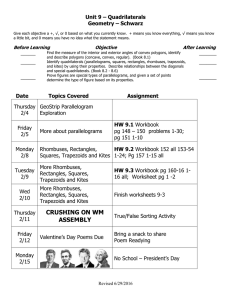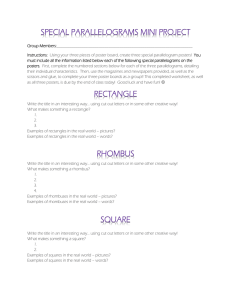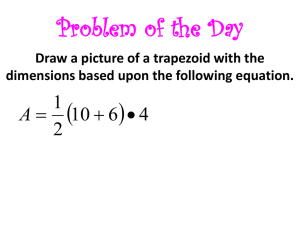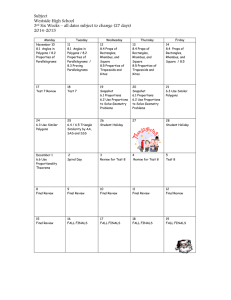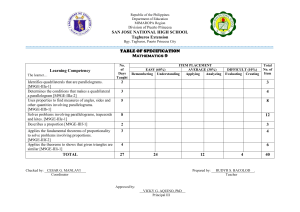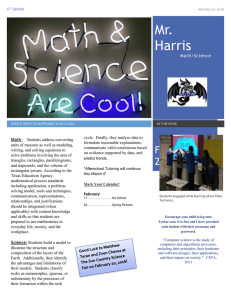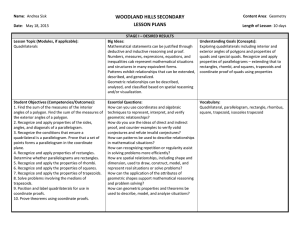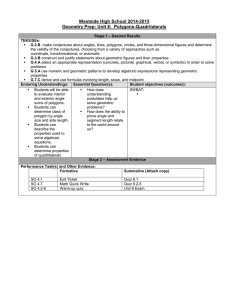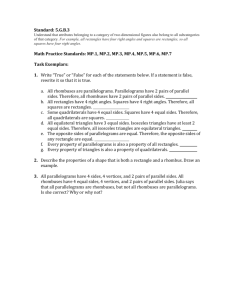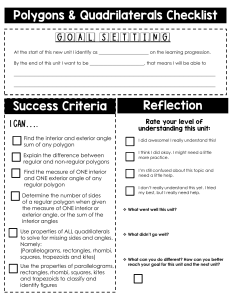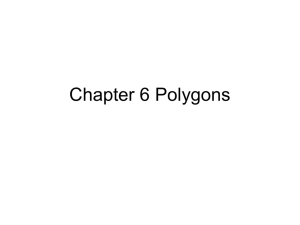Goal 7
advertisement
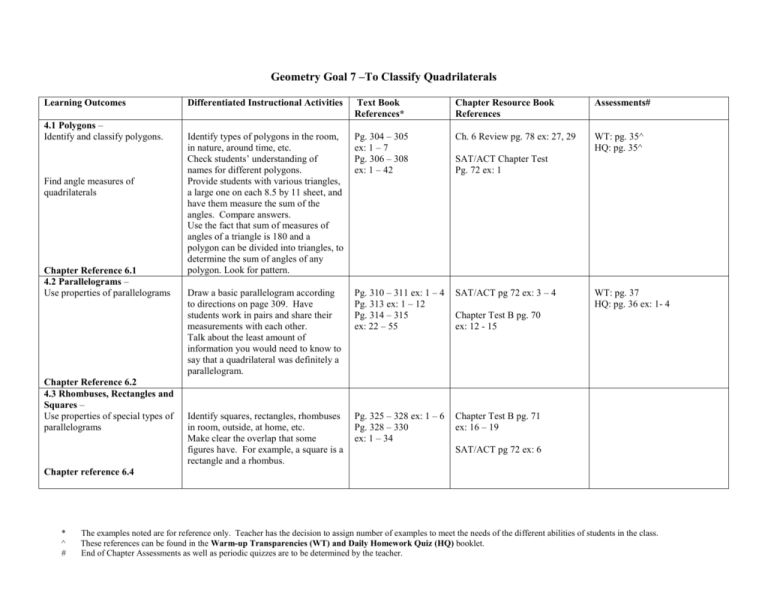
Geometry Goal 7 –To Classify Quadrilaterals Learning Outcomes 4.1 Polygons – Identify and classify polygons. Find angle measures of quadrilaterals Chapter Reference 6.1 4.2 Parallelograms – Use properties of parallelograms Chapter Reference 6.2 4.3 Rhombuses, Rectangles and Squares – Use properties of special types of parallelograms Differentiated Instructional Activities Text Book References* Chapter Resource Book References Assessments# Identify types of polygons in the room, in nature, around time, etc. Check students’ understanding of names for different polygons. Provide students with various triangles, a large one on each 8.5 by 11 sheet, and have them measure the sum of the angles. Compare answers. Use the fact that sum of measures of angles of a triangle is 180 and a polygon can be divided into triangles, to determine the sum of angles of any polygon. Look for pattern. Pg. 304 – 305 ex: 1 – 7 Pg. 306 – 308 ex: 1 – 42 Ch. 6 Review pg. 78 ex: 27, 29 WT: pg. 35^ HQ: pg. 35^ Draw a basic parallelogram according to directions on page 309. Have students work in pairs and share their measurements with each other. Talk about the least amount of information you would need to know to say that a quadrilateral was definitely a parallelogram. Pg. 310 – 311 ex: 1 – 4 Pg. 313 ex: 1 – 12 Pg. 314 – 315 ex: 22 – 55 SAT/ACT pg 72 ex: 3 – 4 Identify squares, rectangles, rhombuses in room, outside, at home, etc. Make clear the overlap that some figures have. For example, a square is a rectangle and a rhombus. Pg. 325 – 328 ex: 1 – 6 Pg. 328 – 330 ex: 1 – 34 Chapter Test B pg. 71 ex: 16 – 19 SAT/ACT Chapter Test Pg. 72 ex: 1 WT: pg. 37 HQ: pg. 36 ex: 1- 4 Chapter Test B pg. 70 ex: 12 - 15 SAT/ACT pg 72 ex: 6 Chapter reference 6.4 * ^ # The examples noted are for reference only. Teacher has the decision to assign number of examples to meet the needs of the different abilities of students in the class. These references can be found in the Warm-up Transparencies (WT) and Daily Homework Quiz (HQ) booklet. End of Chapter Assessments as well as periodic quizzes are to be determined by the teacher. Learning Outcomes 4.4 Trapezoids – Use properties of trapezoids Chapter Reference 6.5 4.5 CAPT Practice * ^ # Differentiated Instructional Activities Text Book References* Chapter Resource Book References Assessments# Complete the drawing of the trapezoid and its midsegment on page 331. Use measurements to determine special properties of midsegment ib relation to the bases. What makes an isosceles trapezoid special? Pg. 333 ex: 1 – 6 Pg. 334 ex: 9 – 46 Ch. 6 Quiz pg. 66 Ch. 6 Review pg. 78 33 – 35 Alternative Assessment and Math Journal pg. 73 ex: 2 HQ: pg. 39 Street Signs, 303 Plants, 307 Truck Lift, 310 Scissors Lift, 314 Additional CAPT practice can be found in these materials at the end of this unit in this Implementation Guide. The examples noted are for reference only. Teacher has the decision to assign number of examples to meet the needs of the different abilities of students in the class. These references can be found in the Warm-up Transparencies (WT) and Daily Homework Quiz (HQ) booklet. End of Chapter Assessments as well as periodic quizzes are to be determined by the teacher. 4.1 Polygons Page 1 Page 2 Page 3 4.2 Parallelograms Page 4 Page 5 Page 6 4.3 Rhombuses, Rectangles and Squares Page 7 Page 8 Page 9 4.4 Trapezoids Page 10 Page 11 Page 12 Page 13 4.5 CAPT Practice Page 14 Page 15
